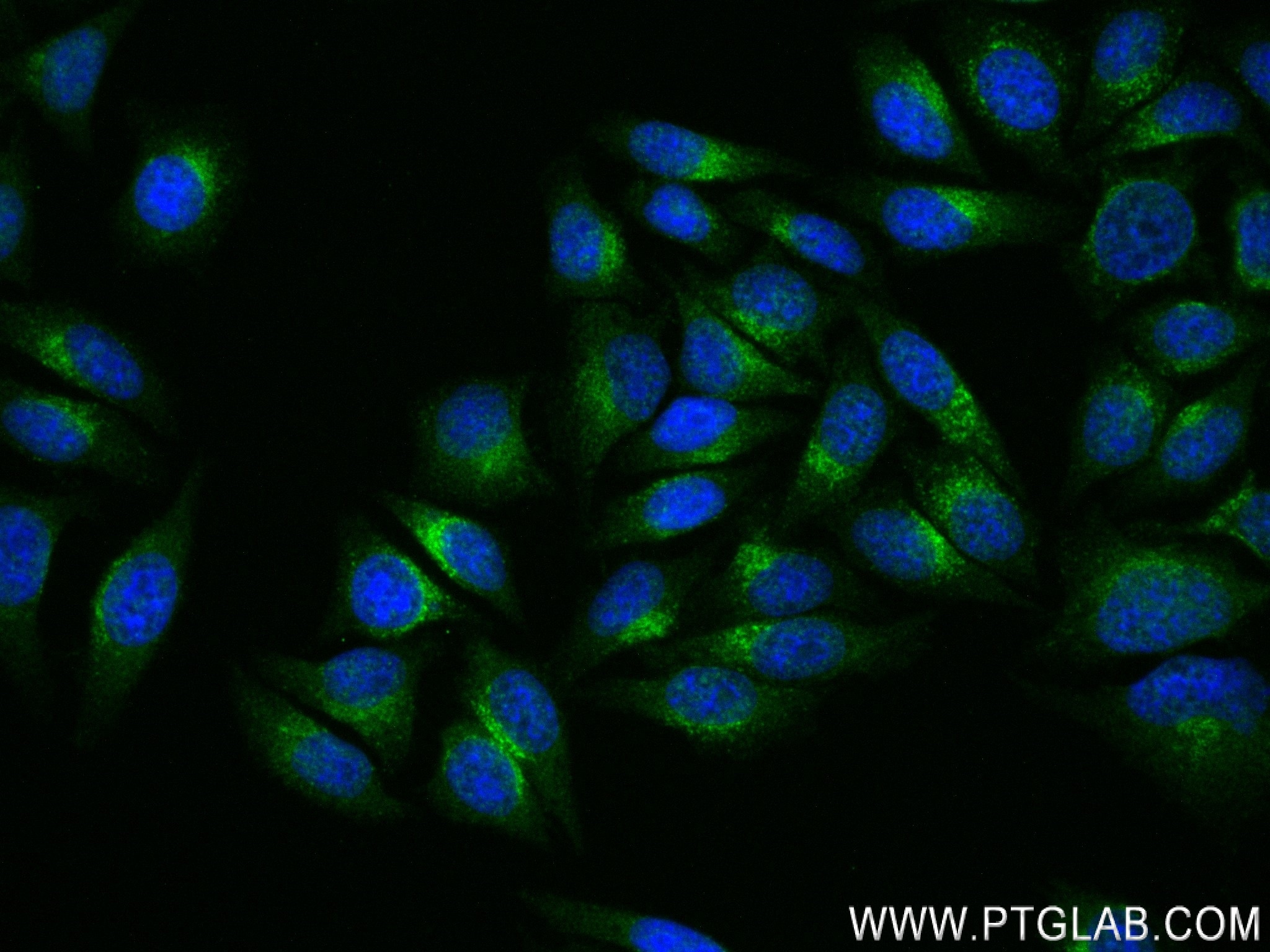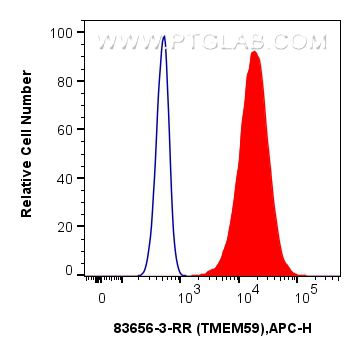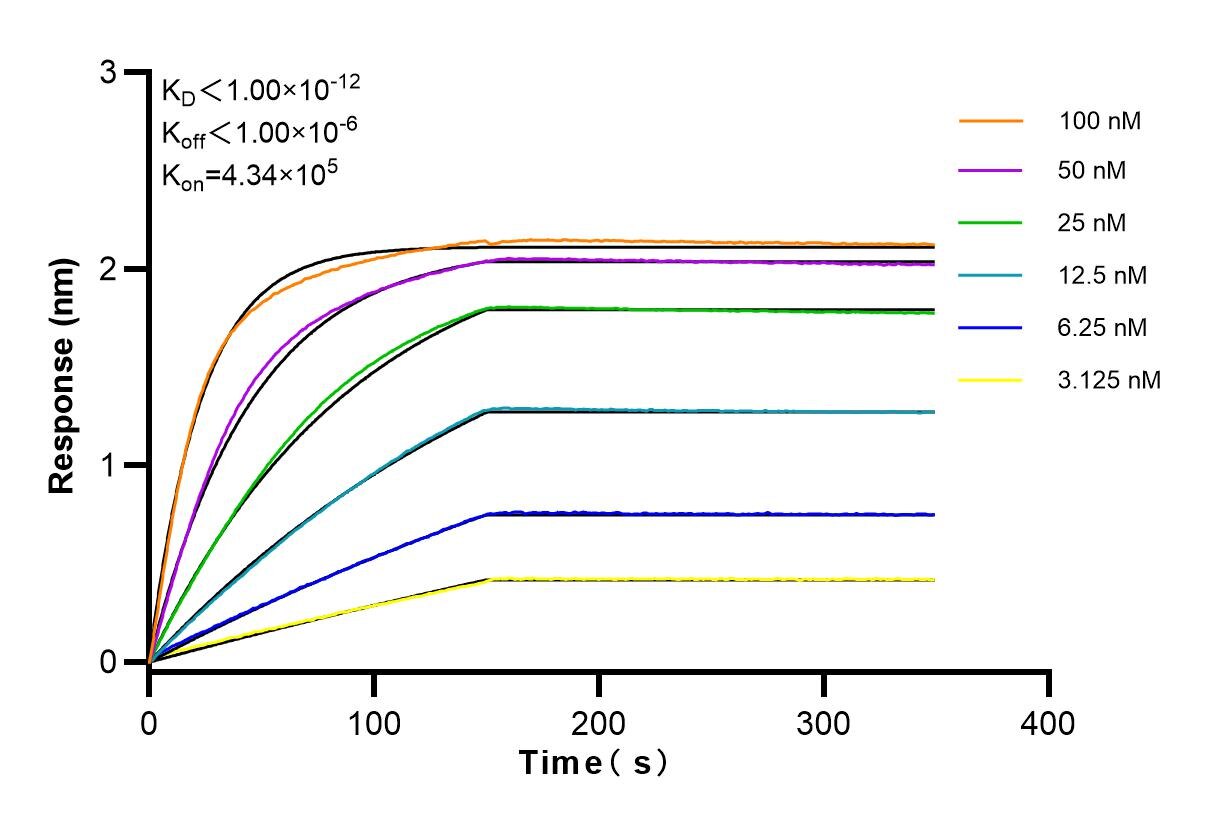TMEM59 Rekombinanter Antikörper
TMEM59 Rekombinant Antikörper für IF/ICC, FC (Intra), ELISA
Wirt / Isotyp
Kaninchen / IgG
Getestete Reaktivität
human
Anwendung
IF/ICC, FC (Intra), ELISA
Konjugation
Unkonjugiert
CloneNo.
240457A1
Kat-Nr. : 83656-3-RR
Synonyme
Geprüfte Anwendungen
| Erfolgreiche Detektion in IF/ICC | HepG2-Zellen |
| Erfolgreiche Detektion in FC (Intra) | HepG2-Zellen |
Empfohlene Verdünnung
| Anwendung | Verdünnung |
|---|---|
| Immunfluoreszenz (IF)/ICC | IF/ICC : 1:125-1:500 |
| Durchflusszytometrie (FC) (INTRA) | FC (INTRA) : 0.25 ug per 10^6 cells in a 100 µl suspension |
| It is recommended that this reagent should be titrated in each testing system to obtain optimal results. | |
| Sample-dependent, check data in validation data gallery | |
Produktinformation
83656-3-RR bindet in IF/ICC, FC (Intra), ELISA TMEM59 und zeigt Reaktivität mit human
| Getestete Reaktivität | human |
| Wirt / Isotyp | Kaninchen / IgG |
| Klonalität | Rekombinant |
| Typ | Antikörper |
| Immunogen | TMEM59 fusion protein Ag1968 |
| Vollständiger Name | transmembrane protein 59 |
| Berechnetes Molekulargewicht | 36 kDa |
| GenBank-Zugangsnummer | BC016374 |
| Gene symbol | TMEM59 |
| Gene ID (NCBI) | 9528 |
| Konjugation | Unkonjugiert |
| Form | Liquid |
| Reinigungsmethode | Protein A purfication |
| Lagerungspuffer | PBS with 0.02% sodium azide and 50% glycerol |
| Lagerungsbedingungen | Bei -20°C lagern. Nach dem Versand ein Jahr lang stabil Aliquotieren ist bei -20oC Lagerung nicht notwendig. 20ul Größen enthalten 0,1% BSA. |
Hintergrundinformationen
TMEM59 is a regulator of autophagy in response to bacterial infection. Overexpression of this protein has been found to promote apoptosis in a glioma cell line. Alternative splicing of TMEM59 results in multiple transcript variants.
Protokolle
| PRODUKTSPEZIFISCHE PROTOKOLLE | |
|---|---|
| IF protocol for TMEM59 antibody 83656-3-RR | Protokoll herunterladen |
| FC protocol for TMEM59 antibody 83656-3-RR | Download protocol |
| STANDARD-PROTOKOLLE | |
|---|---|
| Klicken Sie hier, um unsere Standardprotokolle anzuzeigen |





